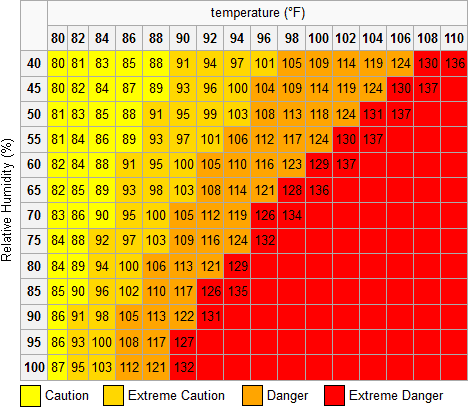Heat Index Calculator
Enter the value that you want to calculate heat index.
Weather Calculators
Introduction of Heat Index:
The heat index is also known as "Humiture". The heat index is a metric that combines temperature of air and relative humidity or dew point.

Effects of the heat index
| Celsius | Fahrenheit | Notes |
| 27-32°C | 80-90°F | Caution: fatigue is possible with prolonged exposure and activity. Continuing activity could result in heat cramps. |
| 32-41°C | 90-105°F | Extreme caution: heat cramps and heat exhaustion are possible. Continuing activity could result in heat stroke. |
| 41-54°C | 105-130°F | Danger: heat cramps and heat exhaustion are likely; heat stroke is probable with continued activity. |
| Over 54°C | Over 130°F | Extreme danger: heat stroke is imminent. |